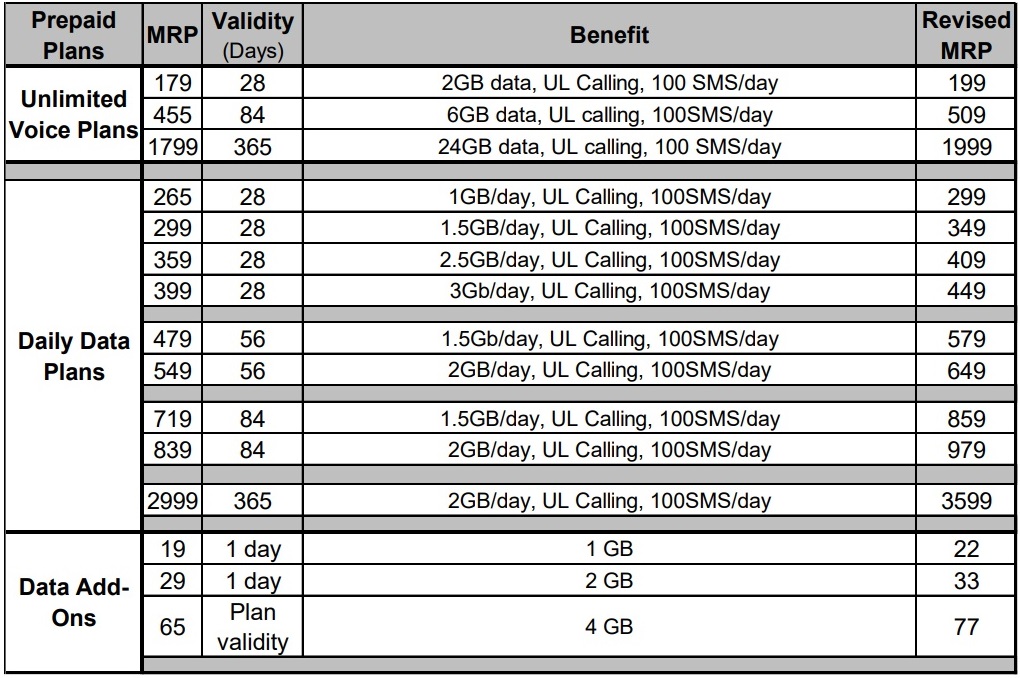1,050% VMware Price Hike: AT&T Details Broadcom's Proposed Increase

Table of Contents
The Shocking 1,050% VMware Price Increase
AT&T's Public Disclosure
AT&T's public statement regarding the proposed VMware price increase highlights the potential for massive financial strain on businesses relying on VMware virtualization solutions. The telecommunications giant's experience underscores the gravity of this situation and serves as a stark warning to other organizations. The sheer scale of the increase – a 1,050% jump – is unprecedented in the enterprise software market.
- Specifics of the price increase: While the exact details of which VMware products are affected haven't been fully disclosed by AT&T, the impact seems broad, potentially affecting core virtualization components and impacting many existing contracts.
- Date of the proposed price increase: The exact implementation date remains unclear, adding to the uncertainty faced by businesses. The lack of transparency from Broadcom further compounds the problem.
- Official statements from Broadcom: Broadcom has yet to issue a comprehensive public statement addressing the magnitude of the proposed VMware cost increase. This silence only amplifies the concerns of businesses reliant on their VMware infrastructure.
The context of this price increase needs further investigation. It might be related to Broadcom's acquisition of VMware and subsequent restructuring of licensing agreements. Regardless of the underlying reasons, the impact on businesses is undeniable.
Impact on Businesses and the IT Sector
Budgetary Strain and Strategic Planning
The immediate financial consequences of a 1,050% VMware price hike are severe. This dramatic increase in virtualization costs can significantly impact IT budgets, potentially forcing businesses to make difficult choices.
- Impact on small, medium, and large businesses: While all businesses will feel the pinch, smaller companies with tighter budgets may be disproportionately affected, potentially leading to reduced IT investments in other crucial areas. Larger enterprises, while better equipped to absorb the cost, still face major budgetary challenges and strategic planning complexities.
- Potential for budget reallocations and project delays: Many businesses might be forced to reallocate funds from other projects, leading to delays or cancellations of critical initiatives. IT modernization and digital transformation plans may be significantly hampered.
- Impact on IT modernization and digital transformation initiatives: The steep increase in VMware costs may directly impede crucial IT modernization efforts, hindering the adoption of new technologies and strategies for improved efficiency and competitiveness.
This price hike could force businesses to fundamentally rethink their VMware strategies, pushing them towards exploration of alternative solutions to control their cloud computing costs and enterprise software costs.
Exploring Alternatives to VMware in Light of the Price Hike
Open-Source Virtualization Solutions
Facing a 1,050% increase in VMware licensing costs, many businesses are exploring open-source virtualization platforms as a cost-effective alternative.
- Leading open-source virtualization platforms: Several robust open-source options exist, including Proxmox VE, oVirt, and VirtualBox. Each offers unique features and capabilities, allowing businesses to choose the best fit for their specific needs.
- Cost benefits and potential drawbacks of switching: The most significant advantage is the elimination of hefty licensing fees. However, migrating to an open-source solution may require additional technical expertise and could involve compatibility challenges.
- Technical challenges of migrating from VMware: Migrating from a mature VMware environment to an open-source platform can be complex, requiring careful planning and execution. Data migration, application compatibility, and potential downtime should all be carefully considered.
A thorough cost-benefit analysis is crucial before making a switch. While open-source options offer significant cost savings, businesses must evaluate the technical implications and potential risks before committing to a migration.
Negotiating with Broadcom and VMware: Strategies for Businesses
Leveraging Bargaining Power
Businesses should proactively engage with Broadcom and VMware to negotiate more favorable licensing terms. The power of collective action shouldn't be underestimated.
- Strategies for negotiating better licensing terms: Consolidating licensing agreements, negotiating volume discounts, and exploring bundled packages can help mitigate the impact of the price increase.
- Exploring volume discounts or bundled packages: Businesses with large deployments of VMware products should leverage their purchasing power to negotiate bulk discounts or bundled packages.
- The importance of consolidating licensing agreements: Streamlining licensing agreements can simplify management and potentially unlock better pricing options.
Effective communication and a firm negotiation strategy are crucial. Businesses should prepare detailed cost analyses and present a clear rationale for their proposed terms.
The Future of VMware Licensing and Pricing
Long-Term Implications and Market Predictions
The 1,050% VMware price increase has significant long-term implications for the virtualization market.
- Potential shifts in market share among virtualization providers: This dramatic price hike is likely to accelerate the adoption of open-source alternatives and potentially benefit competing virtualization vendors.
- The long-term impact on cloud adoption strategies: Businesses may accelerate their cloud migration strategies to reduce reliance on on-premise VMware infrastructure. This could lead to significant shifts in cloud service provider market share.
- Potential regulatory scrutiny of such dramatic price increases: Such a substantial price increase may attract regulatory scrutiny, especially if deemed anti-competitive or exploitative.
The future of VMware licensing and pricing remains uncertain, but this unprecedented increase will undoubtedly shape the competitive landscape of the virtualization market for years to come.
Conclusion
The 1,050% VMware price hike announced by Broadcom presents a significant challenge for businesses relying on VMware virtualization. This article has explored the implications of this dramatic cost increase, highlighting the budgetary strain on businesses, the potential for project delays, and the need to explore alternative solutions. Businesses must act decisively, evaluating their current VMware licensing agreements, exploring open-source alternatives, and developing a robust negotiation strategy. Don't let this dramatic VMware cost increase cripple your IT budget – take action now to secure your long-term IT strategy and mitigate the impact of this unprecedented VMware price hike.

Featured Posts
-
 Manaus Acolhe Maiara E Maraisa No Festival Da Cunha 90 Gratuito
May 20, 2025
Manaus Acolhe Maiara E Maraisa No Festival Da Cunha 90 Gratuito
May 20, 2025 -
 Gmas Ginger Zee Previews Asheville Rising Helene Special At Wlos
May 20, 2025
Gmas Ginger Zee Previews Asheville Rising Helene Special At Wlos
May 20, 2025 -
 Susan Lucci Splashes Water On Michael Strahan A Hilarious Moment
May 20, 2025
Susan Lucci Splashes Water On Michael Strahan A Hilarious Moment
May 20, 2025 -
 Formula 1 Yeni Sezon Takimlar Sueruecueler Ve Beklentiler
May 20, 2025
Formula 1 Yeni Sezon Takimlar Sueruecueler Ve Beklentiler
May 20, 2025 -
 The Life Of A Billionaire Boy Education Relationships And Challenges
May 20, 2025
The Life Of A Billionaire Boy Education Relationships And Challenges
May 20, 2025
